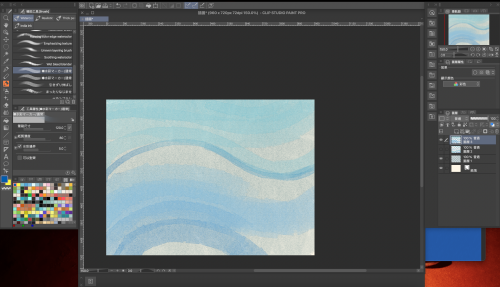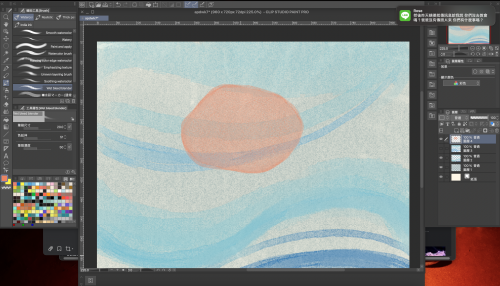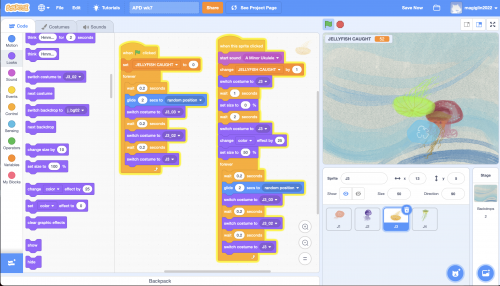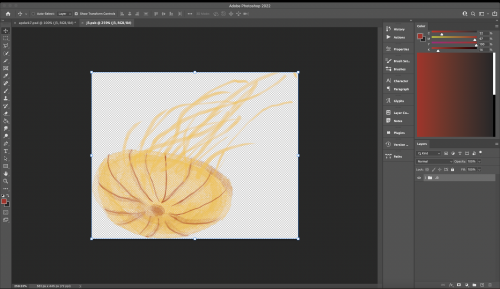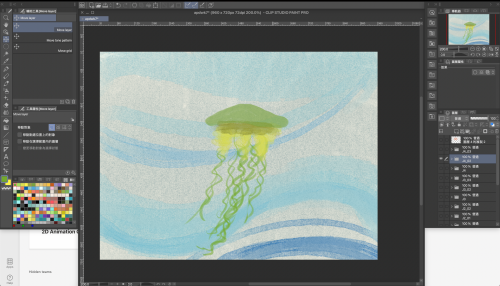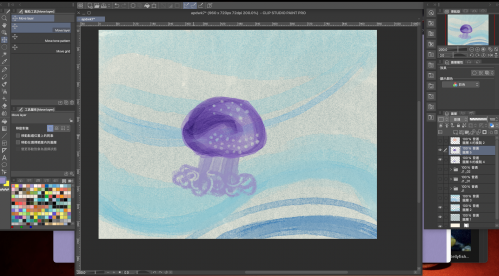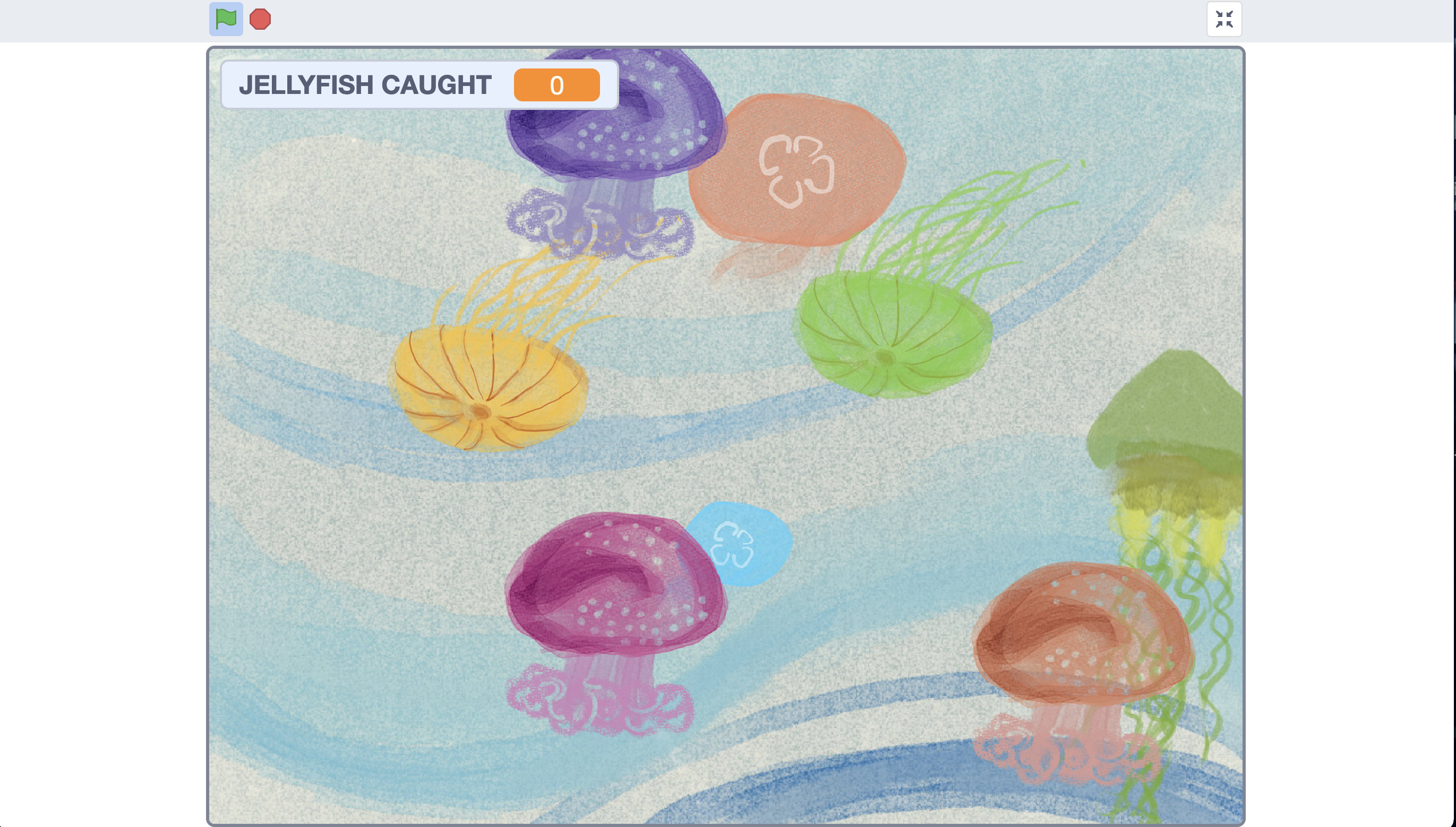
Context:
For the theme, Play and Sound, I wanted to look into how sound can be utilized in games. When kids play, sound is usually one of the elements that catch attention. I wanted to experiment the process of exploring the sound response in play and also playing with the sound in game. I create a clicking game with jellyfish that play random notes from guitar/ ukulele.
Method:
- Create animated jellyfish assets
- Upload animated assets and sprites to Scratch
- Assigned the jellyfish sprites with SFX
- Program clicking/ catching jellyfish response
- Program jellyfish counting
- test play pogromed props
The project is an interactive game. The player clicks on the floating jellyfish to catch them. The number on the screen shows how many jellyfish have been caught. The jellyfish plays a note and disappears when the player catches it. While catching jellyfish, the player also plays a piece of melody.
Reflection:
For the theme this week, I also want to explore the characteristics of “old-fashion play, ” when and how exploration, responses and reactions happen.
When I was brainstorming, I thought of electric/ conductive paint that I have wanted to work with and haven’t gotten the chance. My initial idea was to do a series a mini paintings and assigned them with SFX or soundtracks; and when the viewer touches the painting, they would play sound/ music. So the images/ graphs and sound/ music can compose a narrative or story of some sort.
After digging on the internet, I discovered the special paint is not a common product in shops and I would have to order online, in which case, the product would not be delivered in time. I had to ditch the paint idea.
I went back to the kid’s play experience, which involves touching and sounds. I decided to recreate the experience of making noises with objects in digital game. The aim is to create a mini game where the player can play and create music at the same time.
When clicking on the jellyfish in the game, the jellyfish plays a note, disappears and changes color when popping back up. In the research, Affective surfing in the visualized interface of a digital library for children (Wu 2015), the learning experiences of children is influenced by IS behavior (Information Seeking). For children, learning is play (Bernard Van Leer Foundation. 2017). And it is natural for children to seek for information to satisfy their curiosity (Wu 2015). The initial concept of the game is to trigger the player’s curiosity with the guitar/ ukulele note and the color change. And when the player clicks on a several jellyfish, s/he gradually learn the notes coming from different jellyfish. Aside from catching the jellyfish, the player can also make some melody with specific note of jellyfish.
Due to time constraints, I was not able to figure out recording program and playback in the end of game. I think it would be an interesting add to the game for the player to listen to the music s/he created in the end of the game and share. The playback music is a part of outcome of play.
Reference:
Bernard Van Leer Foundation. (2017). Why children need to play in nature. https://youtu.be/OsofJhHHHiA Wu, K.-C. (2015).
Affective surfing in the visualized interface of a digital library for children. Information Processing & Management, 51(4), 373–390. https://doi.org/10.1016/j.ipm.2015.02.005
About This Work
By Gin Lin
Email Gin Lin
Published On: 27/04/2022

